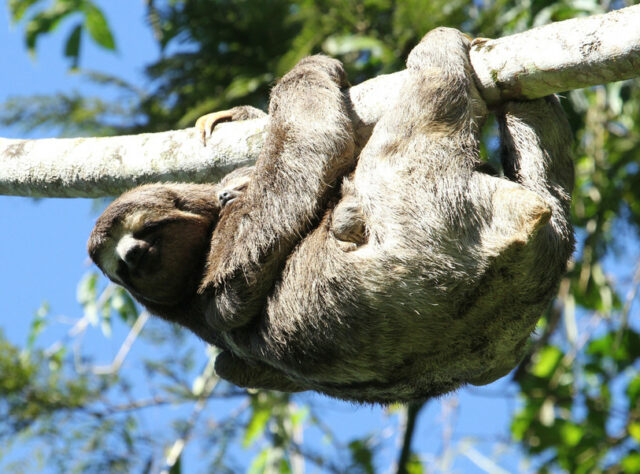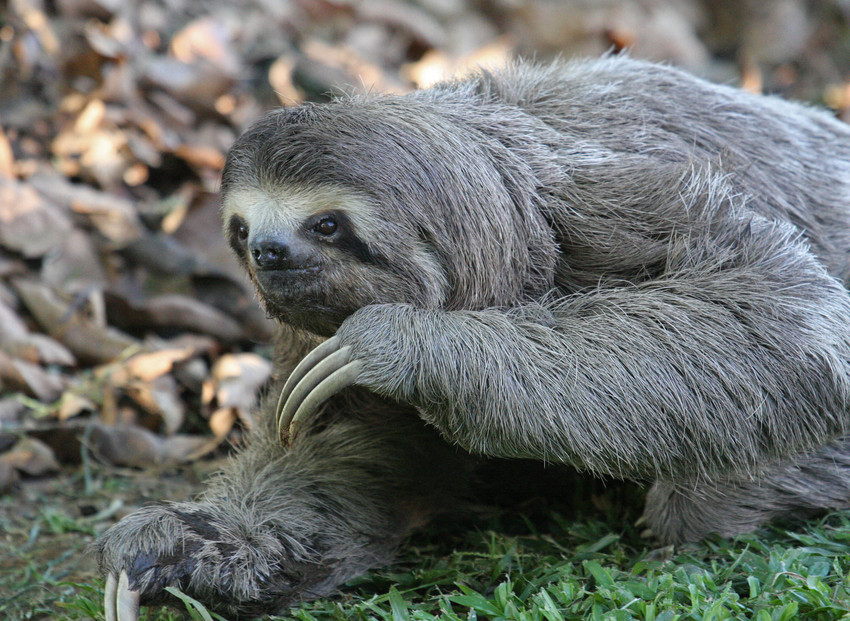
A female Brown-throated three-toed sloth with her baby at REGUA, Brazil. Credit: Scott Guiver
Ecosystems are intricate webs of life, each species interacting with its surroundings in ways that are crucial to its survival. Sometimes, these interactions hang in a delicate balance, whereby a species has become adapted to its environment via many intriguing and often baffling interactions. In this series, we spotlight examples of remarkable adaptations which occur across WLT-supported landscapes.
The Brown-throated three-toed sloth of Brazil’s Atlantic Forest may be a solitary animal, but lives in the company of the many insects that inhabit its fur. Though technically brown in colour, on closer inspection, the sloth’s coat reveals a green tinge. This is because of tiny grooves along the sloth’s hairs which trap water, creating ideal conditions for algal growth. This, in turn, invites the presence of mites, ticks, fungi, and many insect species such as Cryptoses choloepi, a pyralid moth which belongs to the group of so-called sloth moths and lives exclusively in the fur of sloths.
The Brown-throated three-toed sloth’s metabolism, as per its general reputation, is slow. This leads to very specific latrine habits, which some scientists believe enables an astonishing sloth-moth relationship to occur. Once a week, it descends from the tree and will do a poo at the trunk’s base. Female Cryptoses choloepi moths then lay their eggs in the fresh dung where their larvae will develop. When adult moths emerge, they fly to the canopy to mate in the sloth’s fur.

Brown-throated three-toed sloth, REGUA. Credit: Alan Martin.
Researchers have found that sloths with higher numbers of moths in their fur also have higher levels of nitrogen in their coats which leads to further algal growth. It is thought that the sloth ingests these algae, providing it with a fat-rich supplement to its nutrient poor diet.

There is a huge diversity of moths found at REGUA, most of which remain unidentified. Credit: Andrew Proudfoot.
The intriguing yet understudied relationship between the sloth and its habitat illustrates the entangled lives of different species and their role in the fabric of the wider ecosystem.
Severe habitat degradation and fragmentation threatens to disrupt these relationships across the Atlantic Forest. Fortunately, WLT partner REGUA is leading the way in protecting and expanding protected areas to enable these relationships to thrive into the future.

